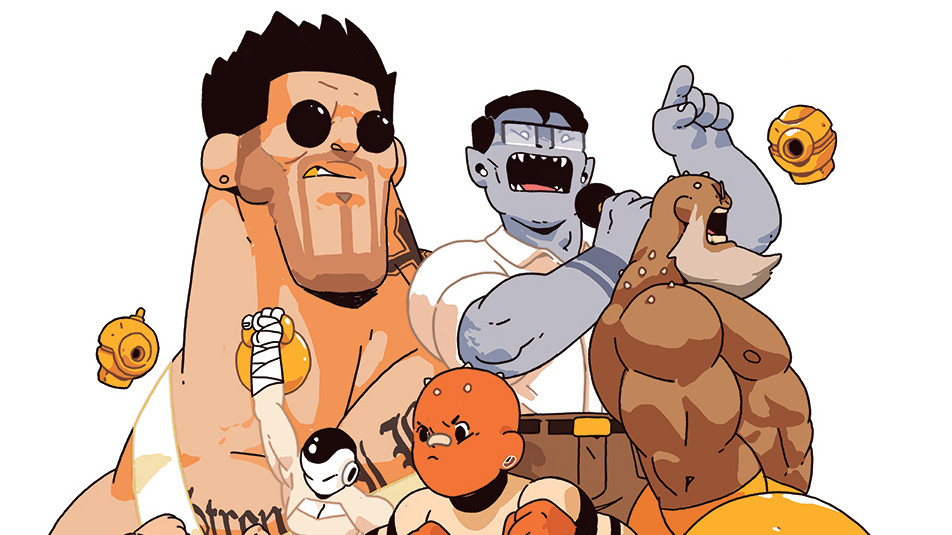4 pros (and 4 cons) of being a freelance designer
What you should know before taking the leap into self-employment.
Freelance life can be wonderful, but it's not for everyone. Sure, there are plenty of pros to going it alone, and many freelancers never look back – but it's not a bed of roses, and you should always do your research first.
For a start, there are plenty of tools for designers that your employer would normally pay for, and you'll need to stump up the cash for yourself. Besides creative skill, in order to be a successful freelancer, you also need the right balance of business savvy, self-discipline, confidence and more.
So if you're thinking about taking the plunge yourself, read on to discover four pros (and four associated cons) of life as a freelancer...
01. Higher earning potential...

It's no secret that freelance day rates are almost always higher than their in-house equivalents. Agencies and clients will pay more for specialist skills on-demand. They can also use you on a project-by-project basis, so can budget accordingly without the need to keep a steady flow of work to justify your salary.
If you can pull in enough regular work from different source – 'if' being the caveat – then it's true, you stand to earn a lot more than you would within a studio environment. And that's definitely one of the potential perks to consider when considering freelance life.
The fact that you can set your own day rates will help, of course, so long as you do your due diligence first: going in all guns blazing with an outrageously high pitch is how not to get hired as a designer. You may even be laughed out the room.
Remember, there's always scope to increase your rates as you get more experience, or for particular types of work – it can certainly be easier than lobbying for a pay rise.
...but no sick/holiday pay

Here's the flip-side to a higher earning potential: you only earn when you're working. You sacrifice all employee rights, not least sick pay, holiday pay, redundancy package, and any kind of bonus (unless you award yourself one).
There are many ways you can save money as a freelancer to help counterbalance this, although having a savings buffer in place before you leave is always wide. This will cover you in fallow work periods, as well as for sickness and holiday – it may also be worth setting up an insurance policy in case of long-term sickness.
02. Choose your own hours...

Sick of working thankless overtime at evenings and weekends, and struggling to see friends, partner or kids? Perhaps constant delays on your sweaty, noisy commute are making you late to the studio almost daily? Or maybe you're a night owl, and just wish you didn't have to get up so early in the morning? The good news is, as a freelancer, you can do away with all of that.
You can still work evenings and weekends if you really want to, or if a heavy deadline requires it. But no more lobbying for flexi-time, or time-off in lieu, or just sucking it up... you can take the next morning off at a moment's notice if you like.
Sure, your holidays may not be paid – but if you're organised, you can plan projects around them so you don't come back to a stack of work to catch up on. And you can be much more flexible around other life commitments, such as childcare – especially if you work from home.
...but spend them on dull admin

Unfortunately, you'll need to fill at least some of those free and flexible hours with stuff you really don't want to do – there are no legal, marketing or accounts teams to fall back on, after all, or a resource manager to tell you how to spend your time. Being your own boss comes with boss-like responsibilities.
Some of this can be absorbed by hiring third-party help, such as an accountant, or an agent – and there are plenty of productivity tools for designers that'll make your life easier. But invoices, expenses, bills and all manner of other studio admin tasks will still commandeer a chunk of your time – and not billable time, either.
03. Pick your own clients...

Naturally, this one depends on your own self-promotion and pitching skills. As well as studio admin, all the responsibility for winning the work is on you too, and time hunting for new business isn't billable either. All these things considered, though, the ball is in your court in terms of what projects you want to do – as well as the balance between client briefs and self-initiated work.
You can choose to hone your core specialities with clients you want to work with (and turn down ones you don't), or explore a range of new opportunities – such as collaborating with others to tackle projects outside your usual comfort zone. It's genuinely exciting to be in full control of your own destiny.
...but you have to chase them for payment

This is the bane of most freelancers' lives. No matter how much you enjoy a project, chasing your invoice for payment afterwards is no fun for anyone involved. Some clients are prompt and cheerful with their payments – hold onto them while you can! – but every freelancer has a tale of a nightmare late-paying client.
You'll need to be more business savvy to deal with it. Put a solid process in place – with a contract to protect you wherever possible – and get ahead of your finances so a stack of unpaid invoices doesn't force you onto the breadline.
04. Work where you want...

As well as being flexible with hours, depending on the nature of your work, you can pick your location too. Whether it's converting a spare bedroom into a home studio, sharing workspace with fellow freelancers, roaming between coffee shops or even working while travelling, it's your call.
There are various tools to help you work remotely as a freelancer, but at a minimum you'll need a lightweight laptop, a decent battery pack and mobile WiFi.
...but you may get lonely

Whether home alone for eight hours a day, or surrounded by the hustle and bustle of strangers in a coffee shop, if you're used to a buzzing, collaborative studio environment with constant conversation, stimuli and like-minded people to bounce ideas off, you may struggle as a freelancer.
Sure, you can meet friends for lunch, or collaborate with others on certain projects, but the likelihood is you'll spend a lot of time with your own thoughts. Some people thrive in that scenario and are far more productive without distractions; others go stir-crazy within a week – only you know which one best describes you.
Related articles:

Thank you for reading 5 articles this month* Join now for unlimited access
Enjoy your first month for just £1 / $1 / €1
*Read 5 free articles per month without a subscription

Join now for unlimited access
Try first month for just £1 / $1 / €1
Get the Creative Bloq Newsletter
Daily design news, reviews, how-tos and more, as picked by the editors.

Nick has worked with world-class agencies including Wolff Olins, Taxi Studio and Vault49 on brand storytelling, tone of voice and verbal strategy for global brands such as Virgin, TikTok, and Bite Back 2030. Nick launched the Brand Impact Awards in 2013 while editor of Computer Arts, and remains chair of judges. He's written for Creative Bloq on design and branding matters since the site's launch.
